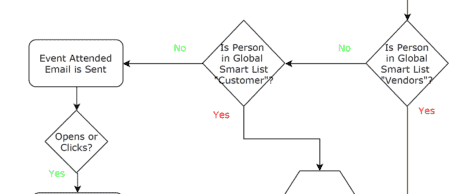
In putting together lead conversion research for one of our clients recently, we ran into some interesting performance data. According to Salesforce, only 13% of captured leads ever progress to become a sales opportunity.
With lead nurturing being a fairly common practice, this means that the typical nurturing campaign is leaving significant opportunity on the table. In our opinion, much of this lost engagement is due to a lack of timeliness in email marketing. So today, we’re going to discuss how to rapidly respond to your lead’s behavior on your website.
What You’ll Need to Monitor Lead Behavior on Your Website
First thing’s first – you’re going to need to invest in marketing software that will give you the ability to capture leads and identify those leads when they return to your site. Because this software works by adding a cookie to your visitors’ browsers, you’ll also need to update your privacy policy and make sure that you have appropriate GDPR compliance policies in place.

How to Trigger Your Website Nurturing Campaign
Once you’ve got your tool in place, you’ll need to add its tracking code to your site and connect your CRM to your lead capture form. Then it’s time to decide which of your visitors’ actions you’ll want to use to trigger a nurturing activity.
Our recommendation is to focus on visits to pages that are closest to a purchase or sales qualification. These triggers might include:
- Pricing pages: sending a discount offer to a known lead who returns to the pricing page
- Shopping cart pages: sending a special offer to anyone who abandons their shopping cart
- Product comparison pages: emailing with a personal introduction to a sales rep who can offer a demo
- Views of qualifying content: B2B organizations without e-commerce may want to trigger a sales outreach based on a visit to a particular service page
If you’re not sure which pages to focus on, try using Google’s Page Value data as your guide in Google Analytics. This calculation is available once you have e-commerce tracking added in Analytics, and attempts to show you which pages drive the most profitable traffic.

Building Your Nurturing Automation
Once you’ve identified your triggers, the next step is to set up your email flow and automation criteria to ensure that your leads are receiving consistently relevant calls to action. This is more easily said than done, as a visitor’s current place in their purchase journey is not always knowable via data.
The best nurturing advice here is to keep each visitor on a single automation sequence, and make sure that you’re trimming those sequences such that it’s not possible to receive repetitive communications or irrelevant offers. We recommend flow-charting out your process to make sure you’ll avoid these scenarios, and testing thoroughly to double-check your logic.
You’ll also want to create “exits” for your automation to accommodate scenarios where your lead has either moved further toward purchase or disqualified themselves from further nurturing. Doing so will
Monitoring Performance
Finally, it’s time to monitor your nurturing program’s performance. We typically use the following metrics to evaluate a lead nurturing campaign:
- Email performance (deliveries, opens and clicks compared to email marketing benchmarks)
- Percentage of leads engaged
- Percentage of leads qualified
- Revenue generated
A common scenario is needing to adjust your email volume or frequency based on performance.
Conclusion
We hope this tutorial has gotten you thinking about the opportunities to nurture your website visitors. If you’d like to discuss potential lead nurturing projects, please contact Young Marketing Consulting.
Share this post on your social profile:
A performance-driven marketing strategist with twenty years of experience growing international brands and organizations, Tim Young spent time at the Corporate Executive Board (now Gartner) and the Entrepreneurs' Organization before founding Young Marketing Consulting in 2013.
His areas of expertise include brand growth and identity development; lead generation and conversion; search engine optimization (SEO); customer satisfaction evaluation and improvement; customer segmentation and CRM work; ROI analysis and improvement; market research; and product development.
Want to get our blogs directly to your inbox?
Enter your email to sign up for our point of view on marketing trends, brand strategy, and sustainable business.


